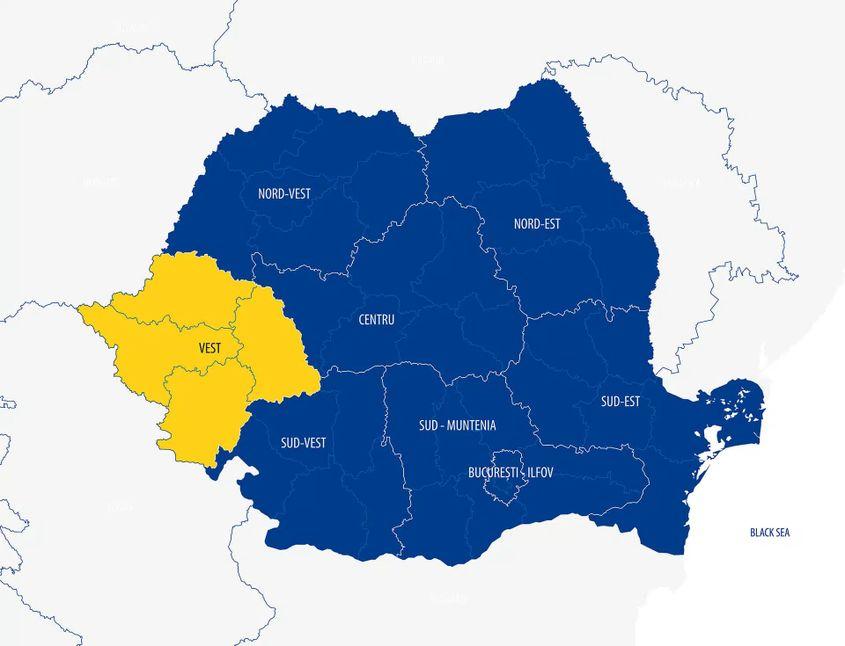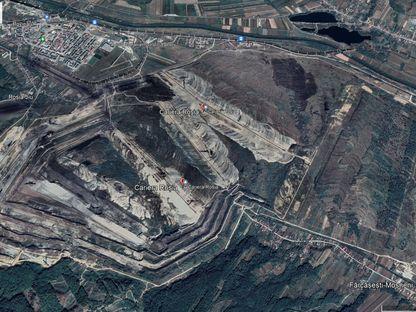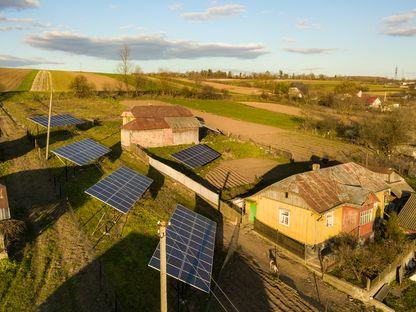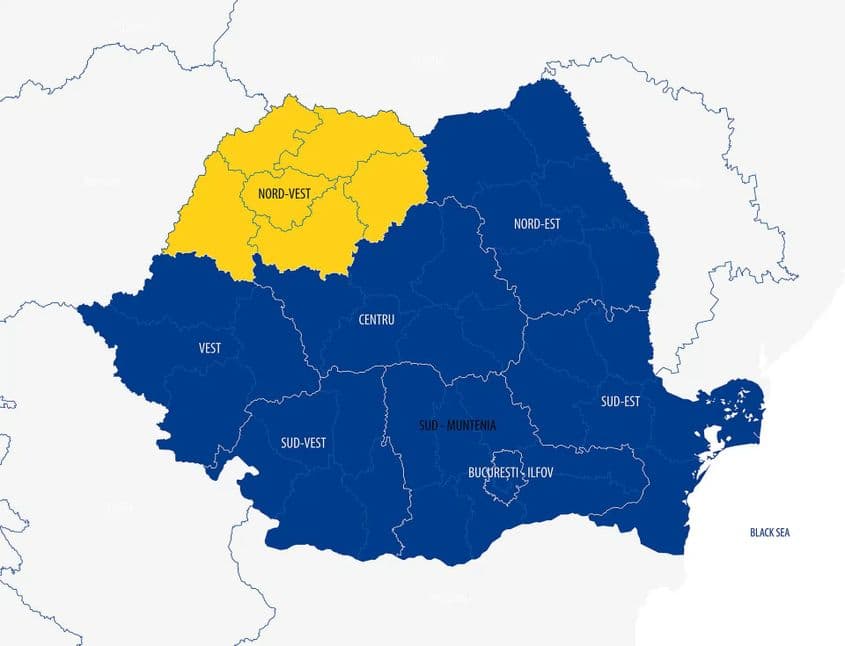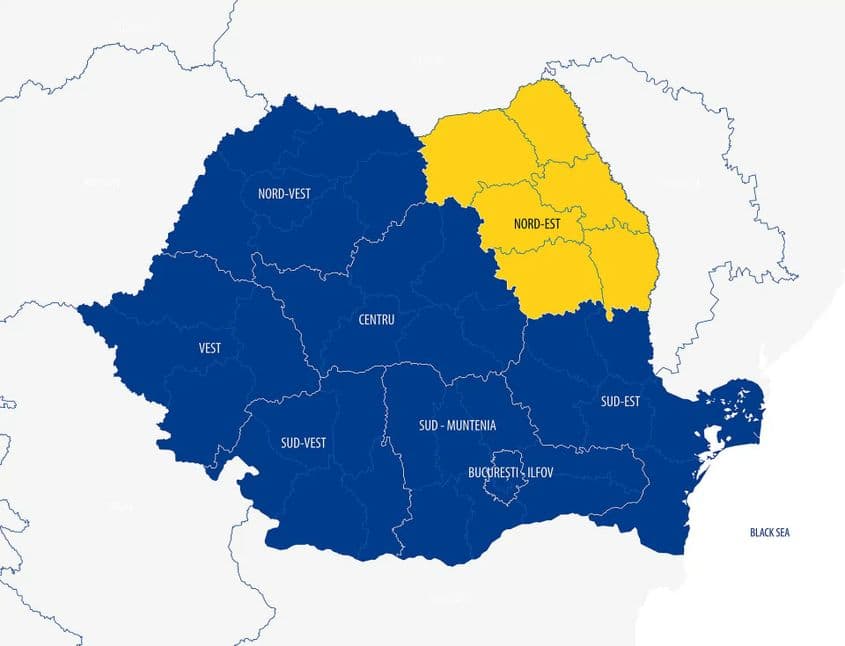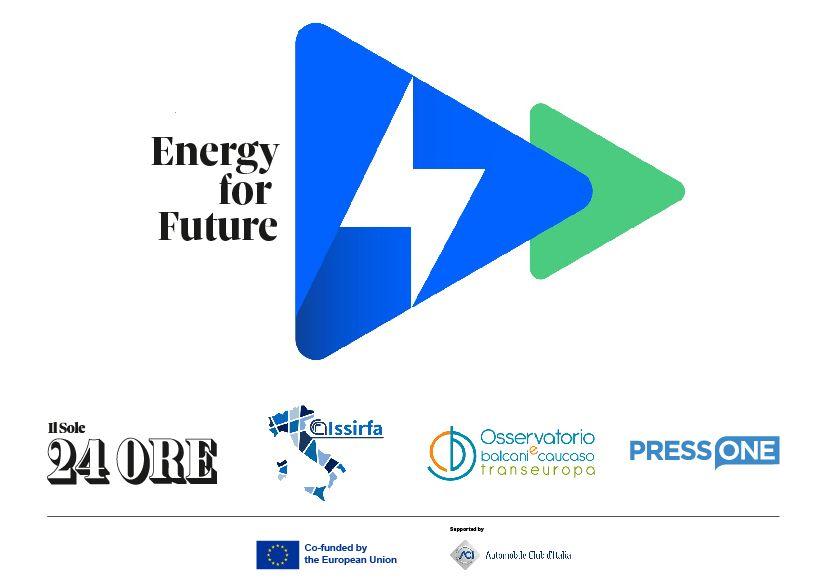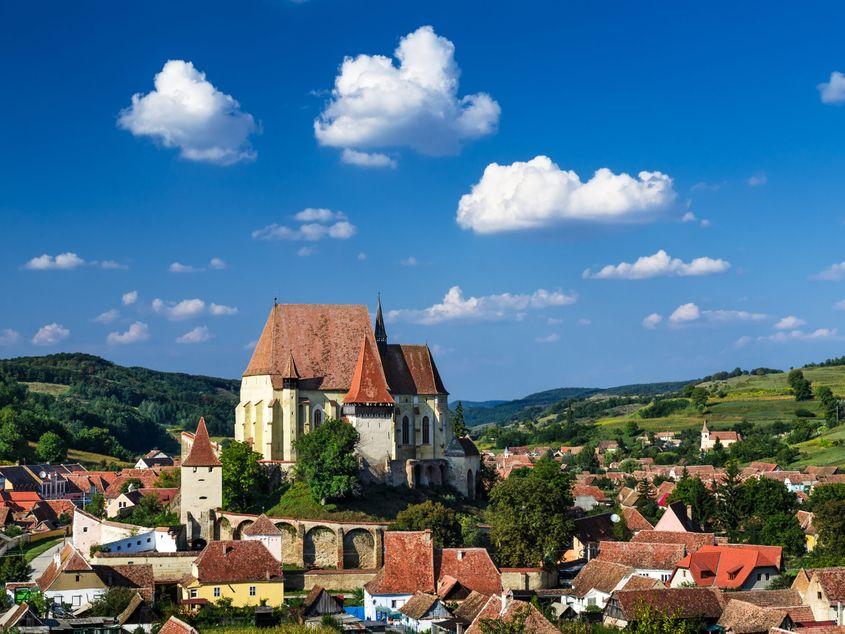
Foto © Emicristea | Dreamstime.com
04/09/2024
The Map of Contrasts (I). How Different the West of Romania Is From the East
For the first time since Romania's accession to the European Union, the cohesion funds available for development are in the hands of the regions. The money is no longer managed centrally by a ministry but by the eight regional development agencies.
What does this mean? Theoretically, it means that the funds will be better allocated to the real needs of each region, so that, for example, there will no longer be such stark differences between the West and the East.
In reality, however, experts consulted by PressOne warn that discrepancies exist even within the same region, and decentralizing just one funding program will not completely resolve these differences.
In a dedicated series, PressOne will analyze each of the eight regional development programs to understand the likelihood that, in their current form, they will contribute to reducing the economic, social, and developmental gaps across the country.
First part: West vs. East
- In the 2021-2027 programming period, the third session of cohesion funds benefiting Romania, the funds available for regional development are no longer managed by a ministry.
- In previous cycles, 2007-2013 and 2014-2020, there was a single funding program for the entire country, the Regional Operational Program, with funds managed by the Ministry of Regional Development. Now, there are eight programs, one in each region.
- Additionally, each region has its own dedicated management authority, and administration is ensured by the regional development authorities.
"In the past, we had project calls under the regional program that were the same at the national level. Can you imagine what it means for an SME from Vaslui, Tulcea, or Hunedoara to compete in the same project call, with the same characteristics and the same evaluation criteria, as an SME from Prahova, Argeș, or Ilfov?" stated Ana-Maria Icătoiu, an expert in European funds, in an interview for PressOne.
The Western Regional Program
Mulți ne citesc, puțini ne susțin. Fără ajutorul tău, nu putem continua să scriem astfel de articole. Cu doar 5 euro pe lună ne poți ajuta mai mult decât crezi și poți face diferența chiar acum!
"The map of the counties in the Western Region. Photo: Ministry of Investments and European Projects
Total budget of the program: €1.1 billion (the regional program with the smallest budget)
Counties included in this region: Arad, Caraș-Severin, Hunedoara, Timiș.
For each regional program, the investment priorities are similar. What differs is the way the funds are allocated to each priority axis in each specific region.
- A competitive region through innovation, digitalization, and dynamic enterprises: €236,109,084
- A region with smart localities: €34,117,648
- An environmentally friendly region: €156,795,295
- A region with high mobility: €157,363,530
- An accessible region: €158,360,000
- A region with modern educational infrastructure: €193,957,645
- An attractive and inclusive region: €193,014,118
Coal Mining Expansion Leads to Deforestation: Over 470 Hectares of Forest Cut Down in Gorj, Romania
Over the past six years, more than 470 hectares of national forest land have been allocated by the government, without compensation, to the Oltenia Energy Complex (CEO) for the expansion or opening of new coal mines.
The not-so-green Romania. The state delays settlements for photovoltaic panels by 2 years
PressOne reviews the main dysfunctions in the production, consumption and distribution of energy from renewable sources, as revealed by discussions with consumers and data provided by official sources at the request of our editorial office.
The Western Region is the second most developed and urbanized region in the country, after Bucharest-Ilfov. According to the European Commission's 9th Report on Cohesion Policy, the GDP per capita adjusted for purchasing power parity is 78.1% of the European average. Additionally, the same report shows that the employment rate for people aged 20 to 64 was over 65% in 2022.
Moreover, according to estimates by the National Commission for Strategy and Forecast, the GDP per capita in the region could reach €21,153 by 2026, significantly higher than in other regions of the country, excluding Bucharest-Ilfov.
However, not all counties within the Western Region enjoy the same level of development. The same forecasts by the Commission show that, by 2026, the GDP per capita in Timiș could reach €25,426, while in Caraș-Severin it might barely exceed €15,000.
Un newsletter pentru cititori curioși și inteligenți.
Sunt curios
Discrepancies are also evident in the average net salary. For 2026, the Commission forecasts an average net salary of 6,256 lei for residents of Timiș, while in Caraș-Severin the average net salary could, at best, reach 4,332 lei.
"We have two champion counties in terms of living standards, Timiș and Arad. At the same time, within the same region, we have Caraș-Severin and Hunedoara, with a standard of living far below the level of development seen in Arad and Timiș," explained Ana-Maria Icătoiu in the same interview for PressOne.
As a result, there are currently specific project calls dedicated only to the two less developed counties, Caraș-Severin and Hunedoara, as well as project calls where the co-financing rates are much lower in Hunedoara and Caraș-Severin compared to Timiș or Arad.
So far, several project calls have been opened under the Western Regional Program for interested applicants. For example, there is a budget of €157,360,000 for sustainable urban mobility projects, and another €41,250,000 for SMEs to become more competitive, including through investments in production. Another project call, with a budget of over €55 million, has been opened for those interested in energy efficiency projects for residential buildings.
Moreover, according to the calendar published by the Western Regional Development Agency, no fewer than 73 project calls are expected to be opened during the 2021-2027 programming period under the Western Regional Program.
The North-West Regional Program
The map of the counties in the North-West Region. Photo: Ministry of Investments and European Projects
Total budget of the program: €1.4 billion
Budget allocation by investment priority axes:
- A competitive region through innovation, digitalization, and dynamic enterprises: €278,719,212
- A region with smart localities: €51,282,941
- An environmentally friendly region: €179,066,195
- A region with high mobility: €259,382,388
- An accessible region: €157,231,901
- A region with modern educational infrastructure: €38,693,050
- An attractive and inclusive region: €178,808,663
Counties included in the North-West Region: Bihor, Bistrița-Năsăud, Cluj, Maramureș, Satu Mare, Sălaj.
According to the European Commission's 9th Report on Cohesion Policy, the GDP per capita adjusted for purchasing power parity in the region reaches approximately 70% of the European average, while over 73% of the population aged 20 to 64 is employed.
According to estimates from January 2023 by the National Commission for Strategy and Forecast, the GDP per capita in the region could reach €19,375 by 2026, which is lower than that in the neighboring Western Region. However, this estimated average for 2026 is not expected to be achieved in all counties, such as Bistrița-Năsăud, where the GDP per capita might, in the best-case scenario, reach €14,715 in 2026.
Discrepancies within the region also exist when it comes to the average net salary. While in 2026 the average net salary in Cluj could reach 6,604 lei, in Bistrița-Năsăud it might only reach 4,000 lei.
"In the region, we have Cluj County, which is above the national average in terms of living standards. However, despite having Oradea, which is doing very well, the rest of Bihor County and the rest of the region, including the counties of Satu-Mare, Maramureș, Sălaj, and Bistrița-Năsăud, are far below this average," stated Ana-Maria Icătoiu, an expert in European funds, in an interview with PressOne.
According to the estimated calendar for launching project calls, the North-West Region is expected to launch 36 calls for the 7 priority axes during the 2021-2027 period. Twelve of these are for phased projects, which were started under the previous Regional Operational Program and remain unfinished. The budget for these 12 project calls amounts to over €95 million, according to the same calendar.
"Phased projects essentially represent a management authority's inability to close projects on time. They limit access to funds for future beneficiaries in the upcoming programming period. As a result, the targets you should meet in the future programming period are supported by a smaller budget," said Marin Florian, an expert in European funds.
According to him, phased projects should be considered exceptions. However, the expert pointed out that in Romania, their number is around 86, far from being an exception.
One of the project calls with the largest budget, over €110 million, is aimed at projects in transport and other forms of eco-friendly urban mobility. It is followed by a call with a budget of €105 million for projects related to the construction/rehabilitation of secondary road connections to the Trans-European road network.
Other large-budget project calls include €52 million for projects aimed at increasing the energy efficiency of public buildings, including heritage buildings, and calls for centralized heating projects in rural areas (€20 million). Additionally, there are expected to be project calls with funding in the millions of euros for projects aimed at improving spa and balneoclimateric tourism infrastructure, both in rural and urban areas.
The North-East Regional Program
Total budget of the project: €1.75942 billion (with only 17% of the total budget coming from national contributions) for the seven priority axes.
Budget allocation by investment priority axes:
- A competitive region through innovation, digitalization, and dynamic enterprises: €420,076,353
- A region with smart localities: €101,110,353
- An environmentally friendly region: €391,985,412
- A region with high mobility: €277,317,177
- An accessible region: €182,169,412
- A region with modern educational infrastructure: €192,109,691
- An attractive and inclusive region: €120,414,706
Counties included in the North-East Region: Iași, Suceava, Bacău, Neamț, Botoșani, and Vaslui.
The North-East Region has the lowest GDP per capita adjusted for purchasing power parity in Romania. According to the European Commission's 9th Report on Cohesion Policy, it only reaches 46% of the European average, making it the only region in the country below 50% of the EU average. At the same time, it is also the largest development region in Romania by population and area.
"Any investor who has to choose between coming to the Moldova region of Romania or going to Hungary, Slovakia, or Poland will not choose the North-East of Romania at this moment, because there is no way to transport their goods either to Western Europe or to Constanța," said Ana-Maria Icătoiu in an interview for PressOne.
The National Commission for Strategy and Forecast estimated in January 2023 that, in the best-case scenario, the GDP per capita in the North-East Region could reach €13,181 by 2026, with only three counties—Iași, Bacău, and Neamț—ranking above the regional average.
Differences within the region are also evident in terms of the average net salary. In 2026, the lowest average net salary is projected to be in Botoșani, at just 4,179 lei, while the regional average is expected to be 4,797 lei.
"There is a huge gap between Iași County and Vaslui or even Neamț and Botoșani. Iași benefits from a major university center and significant investments in the IT sector, which have attracted a young and well-qualified workforce. In contrast, Botoșani and Vaslui remain predominantly rural, with an economy based on agriculture and a low level of industrialization and services," said Ana-Maria Icătoiu, an expert in European funds, in an interview with PressOne.
Calls for Projects with Budgets of Hundreds of Millions of Euros
According to the estimated calendar, during the 2021-2027 financial exercise, 45 project calls are expected to be launched.
So far, 13 project calls have been opened. Some of these are for projects initiated during the previous financial exercise under the Regional Operational Program that were not completed.
In addition to the calls for phased projects, there is a call with a total budget of €600,000 for research and innovation, which is currently under public consultation and is expected to be open to interested parties starting in September, according to the calendar published by the North-East Regional Development Agency (ADRNE).
Another project call, with a total budget of over €55 million, is aimed at green infrastructure and pollution reduction projects, which could fund initiatives such as cleaning up contaminated land or afforestation with locally specific plants.
Another call is expected to allow the acquisition of electric vehicles for school transportation or the digitization of educational institutions, with a budget of €11 million.
To date, the largest project calls are targeted at urban mobility projects. Two such projects combine over €407 million for the modernization and rehabilitation of county roads, the construction of new road segments to connect with expressways or highways, as well as the acquisition of electric rolling stock and the development of alternative and non-polluting transportation methods.
What Happens in the Region Does Not Happen at the Center
Despite having the same priority funding areas and budgets that are not very different in terms of amount, some experts argue that decentralizing just one funding program will not solve the problem of inequalities between development regions.
"I can build a school through the Regional Operational Program (POR), but afterward, if I want more money for teachers, I have to write another project, which I fund through a different program. The likelihood of having perfect synergy between two projects, managed by two different authorities, is small to very small," said Marin Florian, an expert in European funds.
This is because the regional programs, now decentralized, can mostly fund infrastructure needs. Social needs, education, and skills development are still centralized, managed by a ministry. According to the specialist, there is a risk that funds will be used inefficiently on projects that lack continuity across the entire region, especially since the Regional Development Agencies do not have administrative power.
The western part of Romania is already much more developed than the North-East, the expert notes. If the Western Regional Development Agency succeeds in having more projects but not enough funds, then the Western region might draw from the North-East's budget, for example.
"The state, to avoid losing the money, reallocates from the North-East to the West. However, the logic of cohesion funds, if we look at the POR, is to reduce inequalities. But if I keep financing where I already have projects, I'm not reducing any inequality, because that area is already much more developed," Marin Florian argued.
Moreover, he noted that the financing of regional programs does not fully take into account the development needs of the regions and the existing economic mix that could support regional development.
"In the North-East Region, there is a textile industry, which is important from the perspective of the circular economy and green transition. However, the textile sector is not funded in a way that would make a difference in the region, meaning it does not generate growth," Marin Florian emphasized.
___
This article is published in the framework of the "Energy4Future" project co-funded by the European Union. The European Union is not responsible for the information and opinions expressed in the course of this project and article. The sole responsibility for the content lies with PressOne.
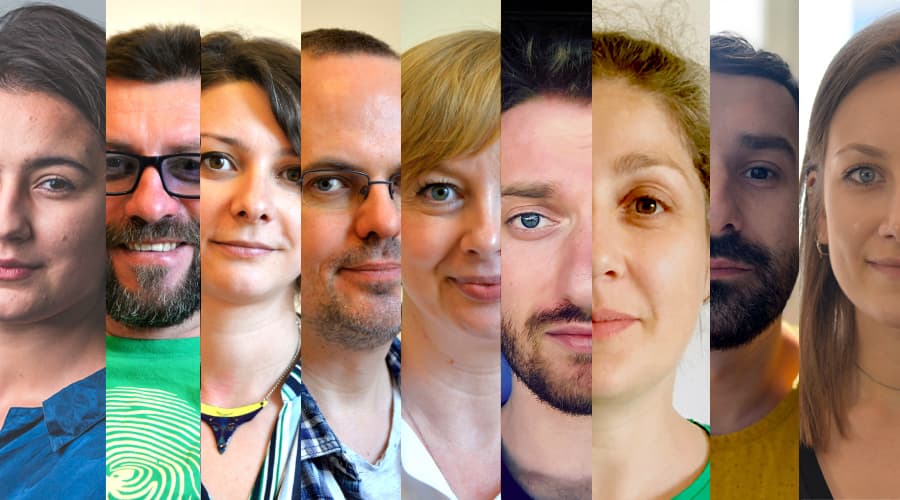
Avem nevoie de ajutorul tău!
Mulți ne citesc, puțini ne susțin. Asta e realitatea. Dar jurnalismul independent și de serviciu public nu se face cu aer, nici cu încurajări, și mai ales nici cu bani de la partide, politicieni sau industriile care creează dependență. Se face, în primul rând, cu bani de la cititori, adică de cei care sunt informați corect, cu mari eforturi, de puținii jurnaliști corecți care au mai rămas în România.
De aceea, este vital pentru noi să fim susținuți de cititorii noștri.
Dacă ne susții cu o sumă mică pe lună sau prin redirecționarea a 3.5% din impozitul tău pe venit, noi vom putea să-ți oferim în continuare jurnalism independent, onest, care merge în profunzime, să ne continuăm lupta contra corupției, plagiatelor, dezinformării, poluării, să facem reportaje imersive despre România reală și să scriem despre oamenii care o transformă în bine. Să dăm zgomotul la o parte și să-ți arătăm ce merită cu adevărat știut din ce se întâmplă în jur.
Ne poți ajuta chiar acum. Orice sumă contează, dar faptul că devii și rămâi abonat PressOne face toată diferența. Poți folosi direct caseta de mai jos sau accesa pagina Susține pentru alte modalități în care ne poți sprijini.
Vrei să ne ajuți? Orice sumă contează.
Share this


